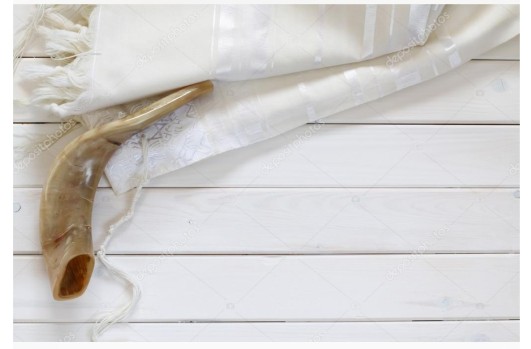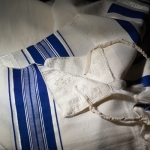Dear Congregation Beth Israel community,
Cantorial soloist Ziva Larson and I are both looking so forward to being with you for Yom Kippur!
If you’re joining us online…
For those who are joining us online, here are some suggestions for creating a sacred space in your home. For Yom Kippur in particular, you might want a white tablecloth, a pebble to hold in your hand during Yizkor services, and a photograph or two of those whom you’re remembering at Yizkor — to place beside your Yizkor candle, which you will light just before Yom Kippur and which will burn for about 24 hours. The flame will gutter and go out during Ne’ilah, the closing service that puts a seal on our Yom Kippur.
(Those joining us onsite will have an opportunity to light a Yizkor candle just before Yom Kippur itself begins — you can light one in holy silence while we listen to Adam Green playing piano music before Kol Nidre.)
Whether you’ll be with us onsite or online, here is an explanation of some of the holiday’s customs.
Why do we wear white on Yom Kippur?
One interpretation holds that we wear white on Yom Kippur as an approximation of the white garments in which we will be buried. (Some wear a kittel, a simple white cotton robe, worn at sacred times and also at burial.) As members of our chevra kadisha / volunteer burial society know, every Jew is buried in the same simple shroud: plain white garments, the same for everyone rich and poor. Wearing white is a reminder of our equality in the eyes of God.
Others teach that we wear white on Yom Kippur to be like the angels. We yearn to ascend, to be lighter, more clear and transparent. White is a color of holiness and celebration — that’s why we only have white kippot / yarmulkes available during the holiday season.
And, of course, some of us find meaning in wearing other clothes that are special to us, no matter what color they are! Some of us wear white. Some of us wear the Jewish version of “our Sunday best” (e.g. the nicest clothes we own). Dress in whatever way will be most meaningful to you.
Why do some Jews avoid wearing leather on Yom Kippur?
There is a custom on this day of avoiding wearing anything made of leather, because leather requires the death of a living creature. On this day when we make our most fervent teshuvah, we don’t want to be garbed in something which required another being’s death. For this reason, you will see some people wearing canvas shoes, or even rubber Crocs, instead of leather shoes.
Another interpretation is that we substitute soft shoes for leather on this day because we want to remove what protects us. The physical act of wearing soft shoes evokes the emotional / spiritual act of removing the covering from our hearts, allowing ourselves to be vulnerable on this day.
And, of course, for some of us these interpretations are not meaningful, and we do wear leather, and that’s fine too. Our congregation includes people with many different relationships to halakha (the “way of walking” sometimes translated as “Jewish law”) and to minhag (custom) — and we bring with us many different minhagim (customs) from different communities of origin, too.
Why do we wear a tallit at night for Kol Nidre?
Kol Nidre evening is one of the very few times in the Jewish year when a tallit is worn at night. (Though it should be donned before sunset — like the singing of Kol Nidre itself, which also must happen during the day, before Yom Kippur technically begins.) Ordinarily a tallit is only worn when it is light out and we can see the fringes.
There are many reasons why the tallit is worn at this unusual time of day. One is that we sing the Thirteen Attributes (“Adonai, Adonai, El Rachum v’Chanun”) at Kol Nidre services, and there is a very old custom which holds that a tallit should be worn when these are chanted. Another reason is that tallitot are frequently white, and when we wrap ourselves in white tallitot, we can see ourselves as being like the angels, garbed in white light.
For some, a tallit is also worn as a sign of transcendent consciousness; for others the tallit can be a stark reminder of death and the transient nature of physical existence, as the dead are sometimes buried in a tallit in addition to the simple white garments and kittel.
Perhaps we wear tallitot at Kol Nidre because on that night, the “light” of our prayers and our connection with God burns so brightly that it illuminates us from within, and we can see our tzitzit gleaming in that holy light.
One way or another…
May your journey through Yom Kippur this year be meaningful and sweet, and may the holiday get you to where you need to be.
Sending blessings your way —
Rabbi Rachel








